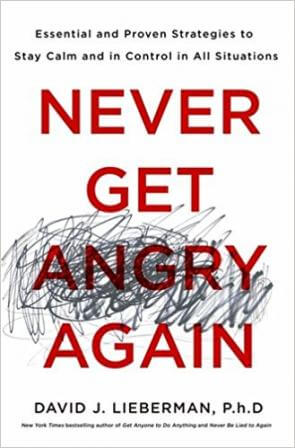
Building credit is always important, but it’s critical before buying a home. Whether you’re a seasoned homeowner or a first-timer, your credit score is a primary factor that mortgage lenders consider when evaluating your application.
Not only does repairing and building credit help you get approved for a mortgage in the first place, it’s the key to locking in a low interest rate that saves huge amounts of money over the life of your loan.
For example, if you get a $200,000 fixed-rate mortgage with excellent credit, you’ll pay about $145,000 in interest with a 30-year loan. But if you have average credit, you’ll pay close to $190,000 in interest for the same loan.
Having less-than-stellar credit costs you $45,000 just in interest. Even if you sell your home before paying off the mortgage, having excellent credit translates into a monthly payment that’s $125 less than if you have average credit.
If you invested $125 per month for retirement, instead of paying it to a mortgage lender, it could easily grow into a nest egg worth over $200,000 within 30 years. Small financial habits, like how you handle credit, really add up.
6 Steps to Build or Repair Your Credit Before Buying a Home
- Check your credit reports.
- Correct any credit errors.
- Deal with delinquent accounts.
- Cut your utilization ratio.
- Reduce your debt to income ratio.
- Discuss your credit situation with lenders.
Follow these six steps to build or repair your credit before house hunting so you get approved for a mortgage that costs as little as possible.
1. Check your credit reports.
Since lenders put a lot of weight on your credit, you should be one step ahead of them by checking it first. Your credit scores are calculated entirely from data in your credit reports, so it’s critical to make sure that your credit reports don’t include any inaccurate information.
Your credit history is maintained by nationwide credit bureaus, including Equifax, Experian, and TransUnion. Unfortunately, most consumers have errors on their credit reports that go undetected for years because they’ve never taken the time to review them.
Unfortunately, most consumers have errors on their credit reports that go undetected for years because they’ve never taken the time to review them.
You probably won’t know which of your credit reports a mortgage lender will examine, so it’s wise to review all three, especially if you’ve never reviewed them or it’s been a while. Plus, your credit files typically vary from bureau to bureau because not all creditors and merchants report your payment information to all three of them. They’re not required to submit data to credit agencies, and many will choose to just work with one of them.
You’re entitled to view or print each of your reports for free every 12 months at the official credit site, annualcreditreport.com. But don’t wait until the last minute—check your reports at least several months before you plan to apply for a mortgage. That gives you plenty of time to correct any mistakes, which I’ll cover in the next step.
And if you know there are black marks on your credit, such as late payments or accounts in collections, start making serious credit repair efforts at least six months in advance. And if you can wait a year before applying for a home loan, that’s an even better timeframe to whip your credit and finances into shape.
When reviewing your reports, carefully check every item including your name, Social Security Number, current and previous addresses, employers, public records, and accounts. And don’t be surprised to see old accounts in your file. Even loans that you’ve paid off or credit cards that you closed stay in your credit file for a certain amount of time:
- Accounts with positive information remain on your credit report for at least 10 years and may remain indefinitely.
- Accounts with negative information, such as late payments or being in collections, stay on your credit report for seven years.
For each of your open credit accounts, verify the available credit limit, the outstanding loan amount, and any late payments. If all your personal and account information is accurate, you can skip the next step. But if you see any errors, get them corrected as quickly as possible.
Note that your credit scores are never listed in your credit reports. That’s because you don’t have one credit score—there are more than 100 credit-scoring models out there. Some rank you with a numerical score, and some assign a letter grade, like an A or B.
As I mentioned, scores are based on the data in your reports, which changes constantly as new data is added and old data is deleted. So, credit scores are a snapshot of your credit in time and you typically must purchase them from scoring companies or credit bureaus.
Mortgage lenders commonly use the FICO credit score, which ranges from a low of 300 to a high of 850. FICO scores over 760 are considered excellent and those under 620 are likely to be turned down for a home loan. You can buy your FICO score for about $20, or you may have a credit card that offers it for free, such as Discover.
There are other credit sites, such as Credit Sesame and Credit Karma, that offer credit reports and credit scores from a couple of bureaus, such as TransUnion and Equifax, for free. These scores may not be the ones that your potential mortgage lender will use, but they’re a good indicator of your overall credit health. Plus, these sites offer great tips for how to boost your credit and they even notify you when your scores move up or down.
See also: FICO vs. VantageScore Credit Score--What's the Big Difference?
2. Correct any credit errors.
If you review your credit reports and find errors, such as an account that isn’t yours or a bankruptcy you never filed, it’s an urgent matter that you need to correct quickly. You could be the victim of identity theft and need to report the matter to the Federal Trade Commission at identitytheft.gov.
Using the bureau’s website is the fastest and easiest way to file a credit dispute, and federal law allows you to do it for free.
But smaller errors, such as in incorrect credit limit or a late payment that you didn’t make, may be easy to clear up by speaking directly with your creditor. It’s also a good idea to go ahead and submit a formal dispute with the credit bureau showing the error.
Using the bureau’s website is the fastest and easiest way to file a credit dispute, and federal law allows you to do it for free. You’re asked to give a clear and concise explanation of why you believe the information is incorrect. You can upload or mail any supporting documents to help sort the matter out.
Then the credit bureau opens a dispute case and contacts the creditor that submitted the questionable information. Your creditor has up to 45 days to respond. If they don’t, the credit bureau makes the correction that you requested and sends you an updated credit report.
If your creditor responds in time, but doesn’t agree with you and won’t make an adjustment to your credit report, you can add a statement of explanation to your credit file. That allows you to tell your side of the story in up to 100 words. Future creditors and merchants may take your statement into consideration when evaluating you.
Any information you add to your credit history remains there for as long as the disputed account appears in your credit history, or until you request to have the statement removed. Remember that accurate, but negative, information can’t be removed simply because you don’t like it. As I previously mentioned, late payments and accounts in collection eventually fall off your credit report after seven years.
And by the way, each credit bureau is required to notify the other bureaus about disputes, so you only need to submit it once. So, the earlier you get started cleaning up your reports, the faster your credit scores can improve.
Yes, making disputes may seem like a hassle, but you’ll be glad when it’s done and you get a great mortgage. Remember that credit bureaus don’t make lending or credit decisions, they simply maintain a database of information that’s reported to them.
See Also: 7 Credit Score Traps You Should Avoid
3. Deal with delinquent accounts.
If you have delinquencies—such as late payments, accounts in collection, and judgments—they will hurt your ability to get a mortgage. Your payment history is the most important factor in the calculation of your credit scores. So, if you have poor credit, it’s probably because you haven’t paid accounts as agreed.
Your payment history is the most important factor in the calculation of your credit scores.
Before putting in a mortgage application, consider paying off any past due balances or negotiating a settlement with creditors. Unfortunately, making a lump sum payment or a monthly payment agreement for a delinquent account doesn’t remove it from your report. As I mentioned, all accurate but negative information stays for up to seven years.
However, getting caught up on late payments helps clean up your report. And black marks in your credit files can be overshadowed by newer, positive information as you make payments on time. In other words, the older a delinquency gets, the less it’s factored into your credit scores and the better you look to a mortgage lender.
One word of caution is that if you have old past due accounts, making a payment can restart the statute of limitations, which comes with legal risks. So, if you have a large amount of delinquent debt, always consult with an attorney before communicating with creditors. Check out The Statute of Limitations and 4 Options for Old Debt for more information.
4. Cut your utilization ratio.
In addition to correcting errors and cleaning up delinquencies, use your credit report to manage another key ingredient in your credit scores: your utilization ratio. This is the percentage of available credit you’re currently using.
For example, if your credit card has $10,000 of available credit and you have a $5,000 balance, your utilization is 50%. The optimal credit utilization is about 20% or less. So, paying down the balance to $2,000 would result in a quick boost to your credit scores.
Don’t make the mistake of closing any credit accounts before getting a mortgage. While it might seem like having fewer accounts would make you appear more attractive to a lender, it can hurt you.
Don’t make the mistake of closing any credit accounts before getting a mortgage. While it might seem like having fewer accounts would make you appear more attractive to a lender, it can hurt you.
Canceling an account could significantly reduce your available credit, which would cause your credit utilization to skyrocket and your scores to go down. So, play it safe and wait until after you move into your new home to close unwanted accounts.
Likewise, having more available credit relative to your outstanding balances can reduce your utilization ratio and help your scores. However, in most cases requesting a higher credit limit comes with an inquiry on your credit, which causes a slight ding. But requesting more available credit might be a good strategy that outweighs the downside, if you’re struggling to bring down your balances and cut utilization on your own.
Also, having a mix of revolving accounts—like credit cards and lines of credit—and installment loans (such as auto, personal, or student loans) helps your credit. If you close all your credit cards, that could negatively affect your scores.
Plus, some lenders require you to have at least two or three credit accounts already open in your name. To have the best credit you need to have both installment and revolving accounts with positive payment history.
See also: How Many Credit Cards Should You Have for Good Credit?
5. Reduce your debt-to-income ratio.
Another approval factor that mortgage lenders use is called the debt-to-income ratio. It shows how your expenses stack up against how much you earn. It’s a good indicator of how comfortably you could take on additional debt.
One formula called the housing or front-end debt-to-income-ratio shows what percentage of your income would go toward your housing costs, such as a mortgage payment, property taxes, association dues, and homeowner’s insurance. Another is the total or back-end ratio, which shows what percentage of income would go toward all your debts.
For example, if all your monthly obligations total $25,000 per year and you earn an annual salary of $50,000, your back-end debt-to-income ratio is 50% ($25,000 / $50,000 = 0.5 = 50%), which is high.
Most home lenders like to see housing ratios below the range of 25% to 28%, and total debt ratios below 36% to 40%. If you exceed these limits, you may need to pay down debt balances to get approved.
So, crunch the numbers on your debt ratios and see if you can reduce them by paying down debt or consolidating it so you have lower monthly payments. Additionally, paying down your outstanding debt balances, boosts your credit.
See also: 5 Lesser-Known Reasons Why Your Credit Scores Drop
6. Discuss your credit situation with lenders.
Before applying for a mortgage or taking your first house hunting trip, I recommend that you talk to several potential lenders. They want to do business with you and can evaluate your financial situation for free.
A preapproval locks in a mortgage offer for a limited period and saves time, allowing you to buy a property much faster than if you were starting from scratch.
Ask how you can qualify for the best rate possible and heed their advice. Each lender evaluates you differently, so you’ll probably hear slightly different guidelines. Research possible loans, rates, companies, and brokers exhaustively. Buying a home is a major commitment and doing your homework can give you a huge financial reward.
If your finances and credit are as good as a lender needs them to be, you can get pre-approved for a home loan before you begin shopping. This helps you know the price range of homes you can afford and it tells real estate professionals and sellers that you’re a great prospect.
A preapproval locks in a mortgage offer for a limited period and saves time, allowing you to buy a property much faster than if you were starting from scratch. It also shows you the down payment you’d need to bring to the closing table.
Once you have a preapproval, be sure not to open any new credit accounts or make any changes to your financial life. They’re conditional on not having any significant modifications to your income, expenses, or credit. So, keep a low credit profile once you begin the home buying process. If you apply for a new credit card or a car loan while you’re waiting to close on a home loan, you risk spoiling your mortgage terms or losing the deal.
How to Buy a Home With Poor Credit
If you have poor credit, there are a few options to still become a homeowner. One way is to apply for an FHA loan, which is a government program offered by approved lenders. FHA loans are available even with a FICO score as low as 580, if you can come up with a 3.5% down payment.
Problem is, FHA loans come with high underlying fees that add to your loan balance. In other words, it can get you into a home, but end up costing you much more in the long run than a conventional mortgage.
If your score is high enough, you could choose to take a conventional mortgage with a high interest rate and refinance it for a lower rate later. The risk is that you might not qualify for a refinance down the road or that interest rates could move higher, leaving you stuck with a bad rate.
Another option to buy a home when you have sub-par credit is to make a larger down payment. Paying more of your own money to buy a home makes you a lower credit risk to lenders because you’re less likely to walk away from the investment.
My advice is to never buy a home unless you’re certain that you’ll stay there for at least five years. You never know how long it could take to sell a house and you must pay closing costs each time you buy and sell real estate.
And just because you qualify for a mortgage doesn’t mean that you should get one. It’s a big commitment that has to fit in with all your other financial goals, such as putting enough aside for retirement and paying down your existing debt. If renting will save you money so you can accomplish your financial objectives, then that may be the way to go.
But, if buying a home has more advantages and you’re willing to put down some roots, then getting your finances and credit in tiptop shape by following these steps is the best way to start.
Get More Money Girl!
If you set a resolution to get out of debt this year, awesome! Now it's time to actually learn how to do it. Don't miss Laura's new online class Get Out of Debt Fast--A Proven Plan to Stay Debt-Free Forever. Enroll with an 85% discount for a limited time when you click here to learn more!
If you're ready for help managing debt, building credit, and reaching big financial goals, check out Laura's private Facebook Group, Dominate Your Dollars! Request an invitation to join this growing community of like-minded people who want to take their financial lives to the next level.
To connect on social media, you’ll find Money Girl on Facebook, Twitter, and Google+. Also, if you’re not already subscribed to the Money Girl podcast on Apple Podcasts or the Stitcher app, both are free and make sure that you’ll get each new weekly episode as soon as it’s published on the web. The show is also on the Spotify mobile app! Click here to sign up for the free Money Girl Newsletter!
Download FREE chapters of Money Girl’s Smart Moves to Grow Rich
House image © Shutterstock
 Linda Gassenheimer's The 12-week Diabetes Cookbook: Your Super Simple Plan for Organizing, Budgeting, and Cooking Amazing Dinners offers 12 weeks of quick and easy, family-friendly recipes. Tune in to hear more about:
Linda Gassenheimer's The 12-week Diabetes Cookbook: Your Super Simple Plan for Organizing, Budgeting, and Cooking Amazing Dinners offers 12 weeks of quick and easy, family-friendly recipes. Tune in to hear more about:




 Whether it’s white, black, pink, red, or even green, the color of sand provides clues as to its makeup and offers a peek into the beach’s history. The color of sand can tell stories of past human activity and can even reveal what kind of sea creatures call that beach home.
Whether it’s white, black, pink, red, or even green, the color of sand provides clues as to its makeup and offers a peek into the beach’s history. The color of sand can tell stories of past human activity and can even reveal what kind of sea creatures call that beach home.


 Pre-order Ellen's forthcoming book
Pre-order Ellen's forthcoming book